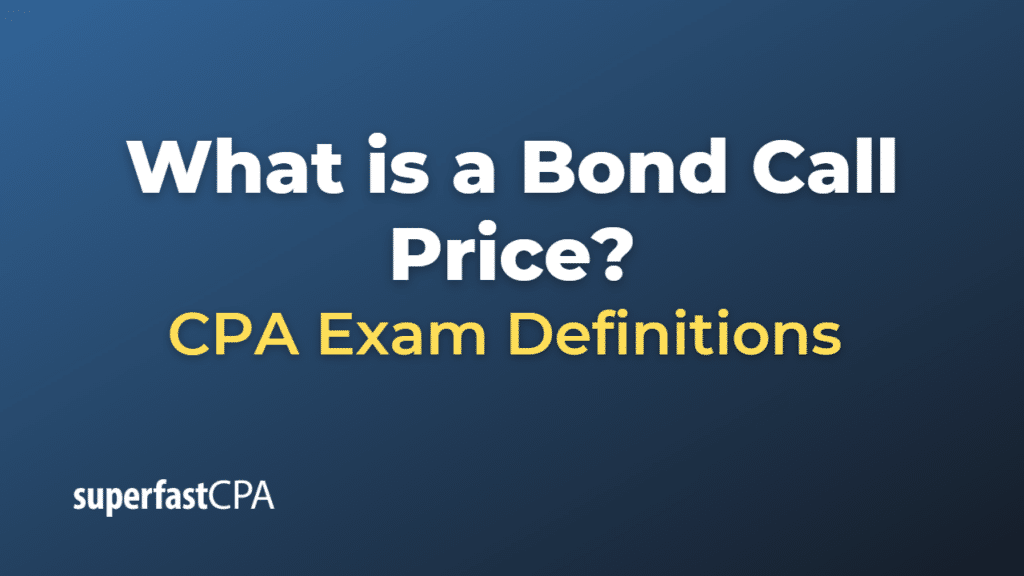Bond Call Price
A bond call price is the amount that an issuer must pay to bondholders if they decide to redeem, or “call,” the bond before its maturity date. Callable bonds contain a provision that allows the issuer to buy back the bonds at a predetermined price, known as the call price, before the bond reaches maturity. This feature provides flexibility for the issuer to take advantage of favorable changes in market interest rates or improvements in their credit quality.
The call price is generally set at a premium above the bond’s face value to compensate bondholders for the risk of having their bonds called early. This premium, known as the call premium, serves as an incentive for the bondholder to sell the bond back to the issuer.
Callable bonds usually have specific call dates, which are the dates on which the issuer can exercise the call option. Some callable bonds also have call protection periods, during which the bond cannot be called. This period provides a certain degree of stability for bondholders, ensuring that they will receive interest payments for at least a specified time.
Issuers may choose to call a bond if market interest rates decline significantly, allowing them to refinance their debt at lower rates. This can result in cost savings for the issuer but may also mean that bondholders receive lower returns compared to if they had held the bond until maturity.
In summary, the bond call price is the predetermined amount that an issuer must pay bondholders if they decide to redeem a callable bond before its maturity date. The call price typically includes a premium over the bond’s face value to compensate bondholders for the risk of early redemption.
Example of a Bond Call Price
Let’s consider a hypothetical example of a callable bond issued by a corporation called “TechCorp.”
TechCorp issues a $1,000 face value, 10-year callable bond with a 6% annual coupon rate, paying interest semiannually. The bond has a call provision that allows TechCorp to call the bond after 5 years at a call price of $1,050, which is a $50 premium above the bond’s face value.
Here’s what might happen over the life of the bond, assuming that TechCorp decides to call the bond at the first available call date:
- For the first five years, the bondholder receives semiannual interest payments of $30 (6% of $1,000, divided by 2 for semiannual payments).
- After five years, market interest rates have dropped significantly, and TechCorp decides it would be advantageous to refinance its debt at a lower rate. Therefore, TechCorp exercises its call option and redeems the bond early.
- TechCorp pays the bondholder the call price of $1,050, which includes the $1,000 face value plus a $50 call premium.
- The bondholder no longer receives interest payments from the bond, as it has been called and redeemed by TechCorp.
In this example, the bondholder receives interest payments for five years and gets the call price of $1,050 when the bond is called. If the bond were not callable and held until maturity, the bondholder would have received interest payments for the full 10 years and the face value of $1,000 at the end of the bond’s term.
Callable bonds can provide issuers with flexibility to manage their debt, but they also introduce some uncertainty for bondholders, as the bonds can be called early, potentially resulting in lower returns compared to non-callable bonds.













